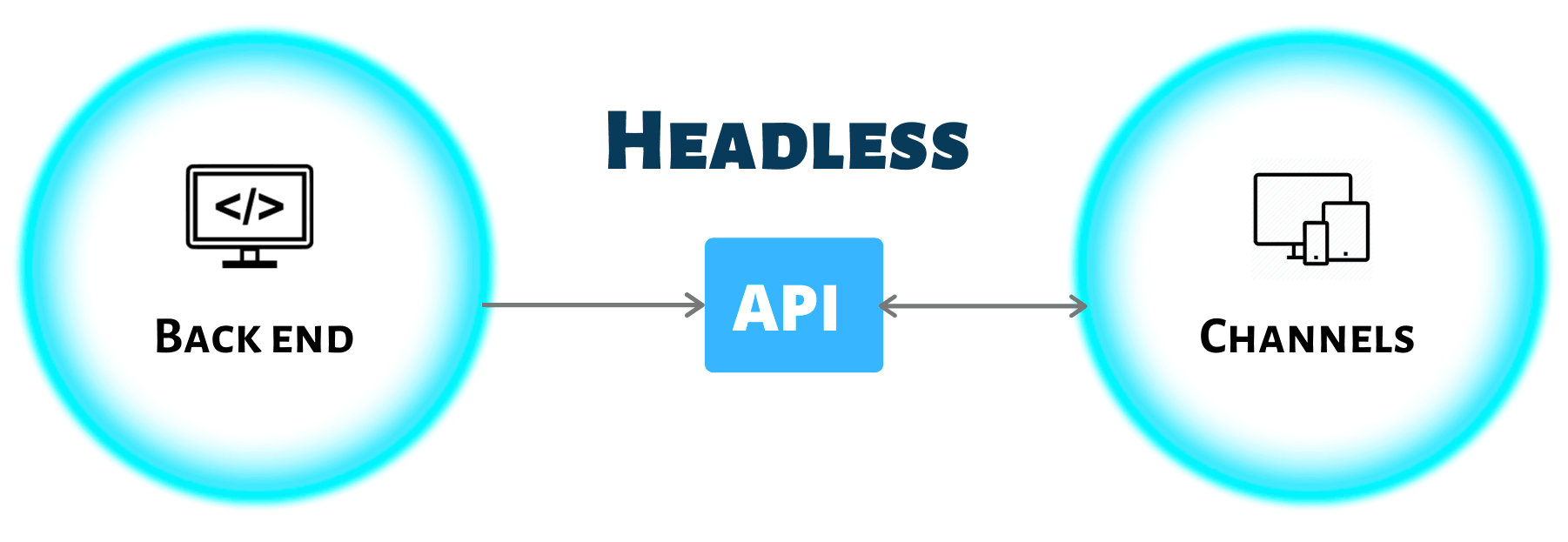As our “connectedness” expands, the concept of headless Ecommerce has gained appeal and popularity.
Headless Ecommerce is a type of software architecture that separates the frontend of a platform from the backend.

Decoupling the backend from the frontend makes it faster and easier to maintain a customized and up-to-date digital presence. With fewer steps to front-end deployment, the businesses save on the development costs and IT teams can focus on more important work.
Meanwhile, headless e-commerce translates into a more responsive and engaging digital experience across all channels for customers.
Read this article to learn about headless Ecommerce and how it can benefit online companies such as yours.
What is Headless Ecommerce?
Headless e-commerce is a separation between the front and backend of an e-commerce application. By using this structure, the developers can update the frontend of an application. There is no impact, whatsoever on the platform’s backend.
What’s more, the frontend updates are reflected concurrently on the backend because an API serves an intermediary between both applications. Since the changes can be made to the user interface without modifying the operational systems behind, a business can update its digital experiences without the help of an IT staff.
Traditional Ecommerce, by contrast, requires backend modifications if they want any changes to the frontend updates. This reliance on IT experts can lead to steep development costs, site downtime, and significant delays for businesses.
Headless Ecommerce is appealing because it allows businesses to update and customize all of their digital experiences from a single backend more quickly and cost-effectively than ever.
Headless Ecommerce Supports Customization and Cost-Efficiency
The headless architecture allows a company to customize its digital experiences with minimal investment in the backend development. When the content is separated from the functional layer and logic, most site changes can be made without the help of IT staff. For example, this allows content-driven brands to make instantaneous adjustments across every client or channel in efforts to maximize conversions.
The universal compatibility of headless applications means that your website works seamlessly on all devices and viewing formats, and be easily integrated with other platforms. This reduces development costs and dependency on IT staff while helping businesses be more nimble in their content strategy.
Headless architecture also allows large organizations with multiple sites to power their entire IT infrastructure from a single backend system. As such, it is best suited to businesses that want to be flexible on the frontend and less reliant on developers on the backend. Unlike traditional systems, headless architecture is replicable and accessible to each frontend throughout an organization. Decoupled applications also help to maintain the security, inventory, and data orchestration needed at large organizations. If you prefer to use templates and make few adjustments to your Ecommerce platform, headless Ecommerce may not be for you.
What Can We Expect with Ecommerce Architecture Going Forward?
With user experience (UX) becoming core to e-commerce, headless architecture will soon be a mainstay. Being able to customize the digital experience quickly and cost-effectively makes headless Ecommerce an obvious choice for digital brands. Brands with headless platforms will be more nimble to their audience’s preferences, from localization to conversion optimization to content styles. As the cost of paid advertising continues to climb, so will the cost of acquiring customers.
Headless platforms enable brands to best leverage their organic digital assets in meaningful and compelling ways, and so remain competitive.
Going forward, Ecommerce businesses without the rich UX, flexibility, and cost-effectiveness of headless architecture risk falling behind.
Headless E-Commerce Streamlines Development And Improves UX
Customers and businesses both benefit from headless Ecommerce platforms. Headless architecture helps to improve UX for customers while cutting costs, increasing agility, and simplifying IT infrastructure for businesses. Brands looking to gain a competitive edge in the online retail space should strongly consider moving to a headless Ecommerce platform.
About SynergyTop
SynergyTop is a leading digital commerce services provider! We have expertise in offering end-to-end Ecommerce solutions to our numerous clients across the globe, including Design/ UX, Development, Deployment, Migration/ Integration, and Mobile/ PWA Ecommerce, among others. We have worked with leading enterprises, SMEs, and startups and have played a pivotal role in their successful Ecommerce journeys.
About the Author –
Grayson Kemper is a Content & Editorial Manager for Clutch, a B2B research, ratings, and reviews platform that allows businesses to research and vet the top services and solutions providers for their needs.
















